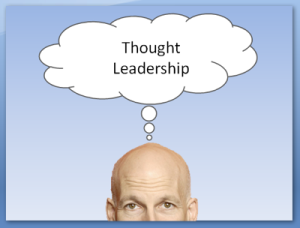I sat down with Srivats Srinivasan, an associate and entrepreneur. Srivats’ company, Nayamode, just acquired a Bay-Area agency called Bluewave. Interesting to see Seattle companies buying Bay Area outfits! I was particularly interested in this because of the role Marketing plays in Digital Transformation- this acquisition was based on Nayamode rounding out its Digital Transformation services.
Some excerpts from the chat …
Marketing Darwinism: Srivats, congratulations on both Nayamode’s success and the recent acquisition of Bluewave. Tell us more about your strategy.
SS: Thanks. We felt strongly that growth and evolution – really our journey to the next phase – required deepening elements of our skill-set as it pertains to the overall rubric of Digital Transformation. In this case, we were enamored with Bluewave’s deep design and visual storytelling track-record and understood that it was a key element in this next phase for us. The strong team and delightful customer base was a wonderful addition too!
Marketing Darwinism: You mentioned Digital Transformation. In your conception, what does it mean exactly?
SS: Yes, we understand that it is a term bandied about, almost in fact too much. In our view, Digital Transformation is about using technology judiciously and in context to create products, processes, and services that enhance and accelerate the best parts of the organization and keep the worst tendencies at bay. Digital Transformation is neither a one-size fits all “thing” nor is it an overnight turn. As with most fundamental shifts, there is a journey required and technology plays only so big a role.
Marketing Darwinism: Nayamode is one of those interesting stories insofar as you’ve grown without really marketing yourself in a broad sense. As Marketers, our readers would love to understand a bit more about your strategy here.
SS: You are no doubt generally correct but we are changing! At the outset, we grew through the sales process, leveraging our connections and experience in Marketing in large organizations, mostly in technology. As we grew, we certainly evolved, but were lucky in that our customers and we created deep partnerships in which as long as we continued to do great work and listen, we remained loyal to each other. Also, we had a bit of the “Cobbler’s Children” problem in which we paid so much attention externally that at times we neglected ourselves. That has changed however. In this phase, very much the most exciting phase in our history as a company, telling our story will be an integral part of the strategy. We are humbled to be included, for instance, in this blog.
Editor’s Note: While in some cases Marketing is an afterthought, we believe that Marketing firms can lead the process of Digital Transformation because of their keen view of the customer and their expertise in pivoting quickly based on business models and customer needs. This traverses the B to B and B to C spaces. We want to hear about other cases of M&A by Marketing companies looking to complete their Digital Transformation portfolios.










